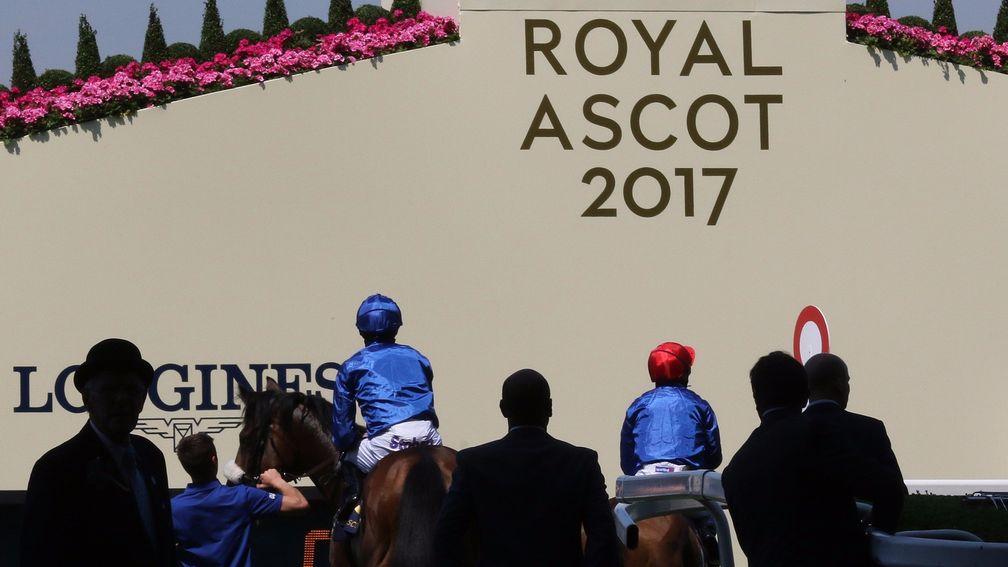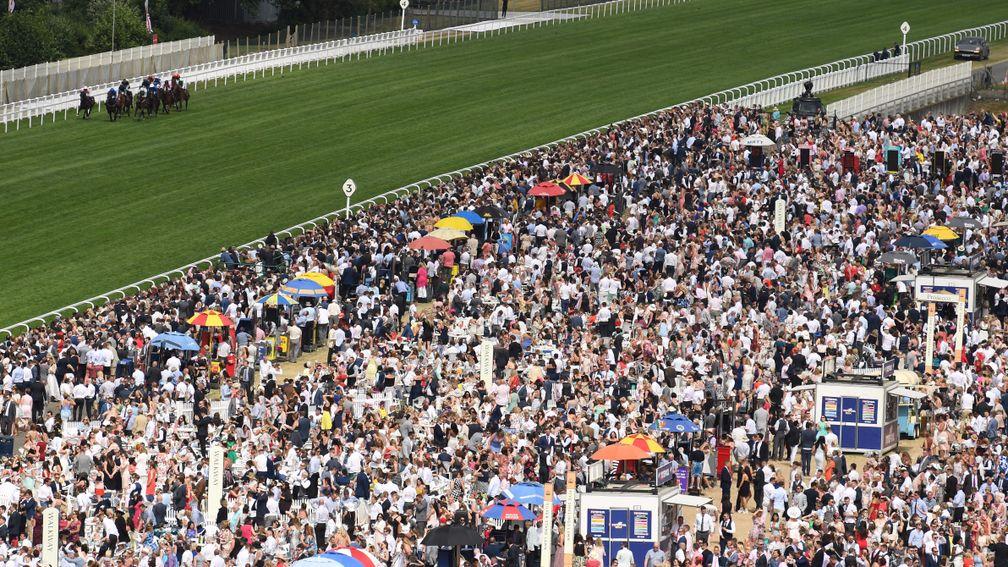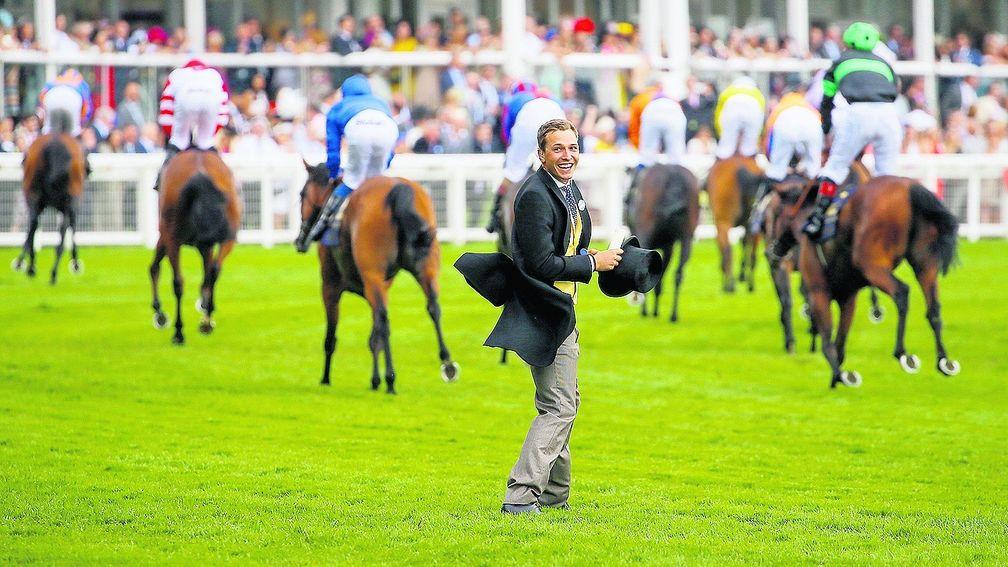Ascot highlights show the use of pacemakers needs to be reviewed

The time is right for the BHA to examine the use of pacemakers. The Queen Anne Stakes showed that to be the case.
Section 57 in the rules of racing states a rider must make no manoeuvre that gives advantage to a horse representing the same owner or stable. The rule goes on to say nothing in that requirement "prohibits pure pacemaking as such". Understanding what that actually means is tricky.
More pertinent is rule 45, which decrees a jockey must "ensure the horse is given a full opportunity to achieve the best possible placing". In relation to pacemakers, that last requirement is particularly important.
Paul Hanagan on Toscanini and Martin Harley on Dutch Uncle would have been riding to instructions in the Queen Anne. Furthermore, followers of racing would likely have expected Godolphin's Toscanini to be used as a pacemaker for Ribchester and for Qatar Racing's Dutch Uncle to assist Lightning Spear in the same way. Indeed, Dutch Uncle's trainer Robert Cowell was quoted saying the horse had been bought "to ensure there's a good, honest gallop".
What we thought would happen duly happened. Yet such was the aggressive tempo set by the two trailblazers, it is hard to believe anyone, even those connected to the horses, could argue either animal was ridden in a way that enabled them to achieve what for them would have been their best possible placing.
As a 110-rated Group 3 winner, Toscanini is a smart athlete. Even so, he finished 14th of the Queen Anne's 16 runners, tabling the third worst Racing Post Rating of his career.
The second worst had come one start earlier when it had been expected he would be deployed as Ribchester's pacemaker in the Lockinge Stakes. Instead, he was not rushed forward after starting slowly, while Ribchester dictated from the front. To some eyes, it might have looked as though an ingenious double bluff had been executed.
Dutch Uncle was eased to finish a 52-length last in the Queen Anne. Across 25 previous outings he had run to RPRs between 49 and 93. On this occasion he managed only 5.
Pacemakers are, of course, a long-established feature of European racing. That is not the case elsewhere. In Australia horses are not permitted to be run as pacemakers, although the culture of wait-and- kick racing would make them less attractive there anyway.
However, the requirement for horses to be ridden completely on merit is seemingly monitored more rigorously in Australia, where the Queen Anne tactics employed by Godolphin and Qatar Racing would surely not have been permitted. Indeed, a trainer who plans to use tactics different to those previously associated with a horse must alert stewards in advance so the betting public can be notified.

Stewards in some other territories might also have looked at the Commonwealth Cup ride given to Ballydoyle's Intelligence Cross, who by racing just behind the invariably keen Harry Angel ensured the chief rival to Caravaggio was not allowed anything like an easy time up front.
An Australian stewarding panel might have asked whether the primary intention for Intelligence Cross was for him to be given the best possible chance of winning or to improve the winning chance of Caravaggio? It would, at the very least, have been a fair question.
This is, of course, a two-sided debate. There have been occasions when pacemakers have led from start to finish. Ascot itself has been home to such scenes, with Maroof and Summoner both making all to win the Queen Elizabeth II Stakes as rank outsiders. More recently, the Aidan O'Brien-trained Windsor Palace captured a Curragh Group 3 at 66-1 from 2-5 stablemate St Nicholas Abbey after he and another Ballydoyle pacemaker were given excessive leeway.
It is also perfectly possible to argue a contest in which the pace is generous throughout is more likely to end with the best horse winning. Accordingly, plenty would say Ballydoyle's inclination to devote one or two horses to the role of pacesetters in the Derby prevents any possibility of the Classic turning into a messy contest. Equally, though, why should a very good horse require the assistance of another horse when the majority in a race do not? Should a top-class performer not be more tactically versatile?
Viewed as a whole, the current laissez-faire regulation of pacemakers, perhaps subtly influenced by the fact they are primarily popular with the sport's biggest powers, is unsatisfactory.
To many spectators the sight of horses who are very obviously being ridden as pacemakers, and thereby throwing away any conceivable chance they themselves might have had, looks wrong. A general sports fan making a rare trip to the races was heard to say exactly that after the Queen Anne. Those punters who back pacemakers –plenty of casual punters and racegoers will do – would often be as wise to throw their cash down the drain. They could easily feel they have been deceived.
A sport whose only chance of survival depends on the retention of punters' confidence and trust cannot defend the running of horses whose principal purpose is to enhance the prospects of another member of the field.
Rules that seem easy to interpret are already in place. Regrettably, they are not being used by racecourse officials. Set against that context of precedence, it is easy to see why those linked to Toscanini, Dutch Uncle and Intelligence Cross could argue with justification they have done nothing wrong. If no action were taken following numerous similar instances in the past, why should the sport's rules suddenly be interpreted differently now?
Yet for the greater good of the sport, a different form of interpretation is required. For that reason, the BHA needs to re-examine its own rules and particularly its stance on pacemakers, plus the wider issue of team tactics. The status quo cannot continue.
ITV delivers - but would a Friday Opening Show deliver more?
It was imperative ITV delivered strong figures for its first Royal Ascot. To the relief of the broadcaster, the racecourse and chief rights negotiator Racecourse Media Group, it did indeed deliver. Just as encouragingly, the coverage largely received a very positive reception on social media, both here and in the US, where viewers saw much of the ITV output.
The opening-day numbers, while in excess of those managed by Channel 4, were not as beefy as many would have wanted. However, as the week progressed the results became increasingly impressive, certainly relative to those Channel 4 had posted, with the Gold Cup day average more than doubling last year's total.
While ITV's Ascot ratings fell some way short of the BBC's 2012 Diamond Jubilee year results, that bird was long since allowed to fly, wisely or unwisely. Moreover, since 2015 the pre-Wimbledon Queen's Club tennis championships have been moved into Ascot week, meaning the sport's biggest Flat festival faces extra armchair competition. The most important thing for racing is ITV succeeded in reversing the decline in Royal Ascot's television audience.
The Ascot ratings were undeniably low for the ITV slot they occupied. The quiz shows normally transmitted late afternoon midweek can peak between two and four million viewers. That is plainly far in excess of the Friday high of 1.4m. ITV would, however, always have known that was going to be the case.
The industry's leading commercial network benefits in other ways from housing an event of national renown on the main channel for an entire afternoon. Next year, when there is a 3pm World Cup match every Royal Ascot afternoon, the scheduling decisions will not be so straightforward.
The World Cup is shared between the BBC and ITV, but the BBC would need to be in a particularly co-operative mood to take all five 3pm matches. Depending on the teams in action, ITV might not want that anyway.

A more immediate question is what schedulers do with The Opening Show, whose Tuesday average of 31,000, while not bad for ITV4 in a 10am slot, is tiny compared to what it deserves to get and The Morning Line used to get.
It would be no surprise if ITV does not soon come to the conclusion 10am is simply the wrong time to air the programme, excluding, as it does, many keen racing fans and racegoers.
ITV could potentially be rewarded by trialling a move to Friday evenings.
ITV Racing's Facebook Live transmissions on Friday nights have pulled in up to 20,000 viewers, an excellent total for the platform. If The Opening Show were brought forward to Friday, perhaps between 7pm and 8pm on ITV4, not only might the live audience grow, people would also have the opportunity to record the programme and watch it early on Saturday, should they so wish.
As an option, it's certainly worth consideration.
Published on 25 June 2017inComment
Last updated 16:57, 25 June 2017
- The whole shape of the Irish Flat season is being defined by one man only - and even his main targets lie elsewhere
- Analysis: Flutter and 888 have enjoyed contrasting fortunes but they still have things in common
- Only a baby step but an important one if racing is to keep some of its David v Goliath moments
- There are so many great betting opportunities on Saturday - here are my best bets including a very strong Curragh fancy
- Coolmore and Godolphin spare the sport some embarrassment - and not for the first time
- The whole shape of the Irish Flat season is being defined by one man only - and even his main targets lie elsewhere
- Analysis: Flutter and 888 have enjoyed contrasting fortunes but they still have things in common
- Only a baby step but an important one if racing is to keep some of its David v Goliath moments
- There are so many great betting opportunities on Saturday - here are my best bets including a very strong Curragh fancy
- Coolmore and Godolphin spare the sport some embarrassment - and not for the first time